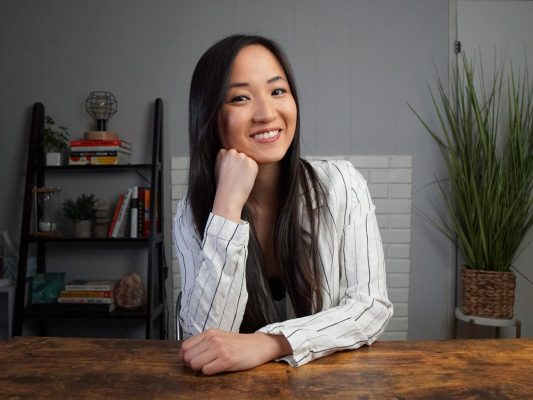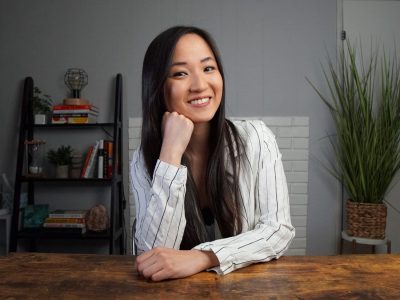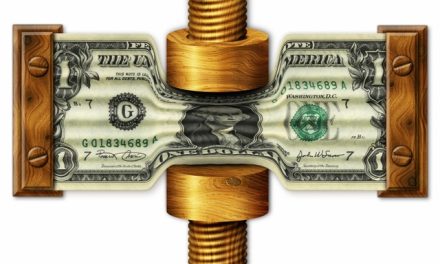 By Laila Maidan | Business Insider
By Laila Maidan | Business Insider
Sharon Tseung graduated from the University of California, Berkeley with a bachelor’s degree in 2012. Her first experience working a 9-to-5 job was right out of college at age 21, as a marketing coordinator making $30,000 a year.
“When I first started working upon graduation, I was shocked that adults just do this every day until they are 60,” Tseung said.
A couple of years later, she was able to take a month-long vacation to Europe. During that trip, Tseung decided to figure out how to achieve a level of financial freedom that would give her the flexibility to choose how to spend her time. The thought of driving to the same place every day, looking at the same four walls, and doing a job she wasn’t super passionate about was a situation she didn’t want to be stuck in for the rest of her life. She began thinking of alternate ways to make more money outside of her day job.
Shortly after returning from Europe, Tseung began investing and using her skills to build multiple sources of passive income. This year, at age 30, she reached a million-dollar net worth, according to records viewed by Insider.
Although she can live off her passive income, she chooses to keep her job because she enjoys it and so she can continue to use her income to grow her wealth. She now teaches others how to manage their finances, invest, and build passive income through her blog and her accounts on YouTube, TikTok, and Instagram.
Below, she shares the four main steps she took to reach her goals.
- She kept her expenses minimal
When she was making $30,000 a year, or roughly $15 an hour, she refrained from spending on anything that wasn’t necessary, like clothes, bags, or eating out. Every time she wanted to make a purchase, she would think about the number of hours she had to work to be able to afford it. This helped her determine whether spending money on a product or experience was worth it.
She also decided to live with her parents until her mid-20s rather than move to the city like many of her friends. This allowed her to save money on rent. She bought a used and affordable car so she wouldn’t have to finance one.
“What many people don’t realize is that a new car loses value as soon as you drive it off the dealer’s lot. I decided to purchase an affordable but safe $6,700 used car with all cash so I didn’t have to get a loan on a depreciating asset. I love this car because it allowed me to save more money to invest, and I don’t worry about getting scratches on my car,” Tseung told Insider.
Tseung eventually moved out at 27. But she still wanted to keep her living expenses low, so she rented a room in a two-bedroom apartment with two other roommates. The living room was turned into a third bedroom to lower each person’s rent. This kept Tseung’s rent below about 15% of her income, she told Insider.
- She invests in opportunities that can generate more money
Because of her savings habits, Tseung has always been able to invest a majority of her money into things that generate more income, such as her brokerage account, retirement funds, and rental properties.
She has several online side hustles, including affiliate marketing and an Etsy shop, and she spends money on things like courses that improve her skills, upgrading tech equipment, and adding online management tools to run her platforms.
- She focused on learning high-paying skills
Tseung read numerous books, blogs, and watched YouTube videos that helped her change her mindset and learn the technical skills she needed to take on jobs that would pay more.
When it came to books that shifted how she thought about money, one of the books that had the greatest impact was The 4-Hour Workweek by Timothy Ferriss. The book focused on escaping the 9-to-5 workweek. A second book that impacted the way she thought about making money was Rich Dad Poor Dad by Robert T. Kiyosaki. This book taught her to make money work for her instead of her working for money.
As for the new technical skills she was learning, she experimented by implementing them at her job and even building her own platforms to put what she learned into action.
“I would definitely recommend trying to build your own website and blog because you learn a lot about marketing while doing that, like SEO, paid ads with social media, copywriting, and things like that.
But also when you’re at your full-time job, make sure you’re taking initiative with new projects and wanting to learn more at work and then finding new roles that will push you to not just do the same thing every day. I think it’s a great way to grow your skills,” Tseung said.
- She traveled the world for two years while learning to generate passive income
In 2016, Tseung was finally able to spend two years traveling the world. During this time, she worked remotely, accepting three part-time positions that allowed her to work from her laptop managing and designing ads. After five months, she was able to gradually transition into working on her passive income streams full-time.
This experience taught her that she didn’t need to rely on a 9-to-5 job. Tseung had time to learn to build passive income streams through blogging and building an Etsy shop where she sold digital products like Photoshop templates and Microsoft Word templates. As her income gradually increased, she experimented by adding new products, such as T-shirts.
When Tseung came back from her two-year globe-trotting experience, the new skills she developed allowed her to land a job as a marketing manager with an annual six-figure salary.
Today, Tseung still keeps her day job but also collects income from her real estate properties, sales from her online courses, ad revenue, affiliate marketing, Merch by Amazon, Fulfillment by Amazon, Etsy, and dividends from her investment portfolio.
Tseung’s advice to everyone is to follow your heart.
“With everything I was doing, it was all about following my callings. When it came to building passive income streams, quitting my job and traveling the world for two years, all of those decisions I don’t regret and it’s helped me with my financial freedom,” Tseung said.
“And always kind of tie it back to your mission and your ‘why’ in life. For me, it’s to continue being impactful and building my brand, teaching people how to build passive income and become financially free.
Creating that financial freedom also means more time with family. When I have a kid, I want to be able to spend more time with them and more time to work on things I enjoy.”







